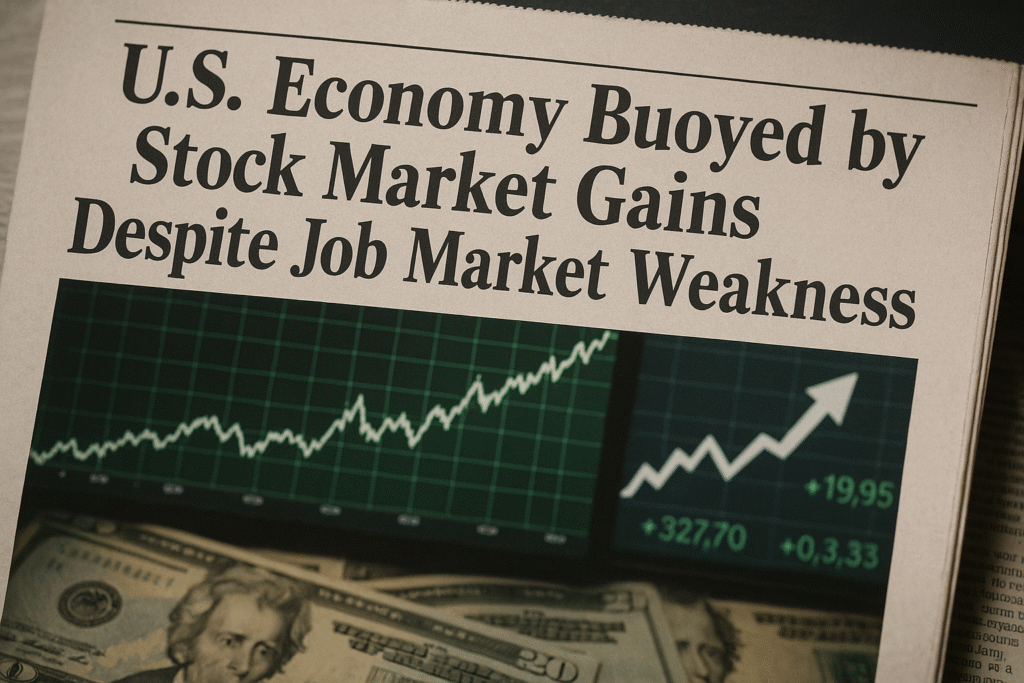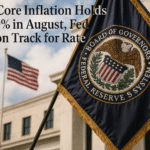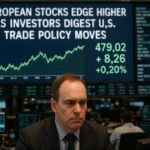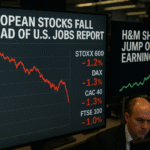By Harshit New York, September 28, 2025 — 11:00 AM ET
The U.S. economy continues to defy expectations of slowdown, with stock market gains driving consumer spending and helping stabilize growth even amid weak job creation and persistent inflation pressures, according to recent data and expert analysis.
Stock Market’s “Wealth Effect” Powers Spending
Despite concerns over tariffs, political tensions, and a stagnating labor market, Wall Street’s strong performance appears to be putting a floor under the broader economy. Major stock indexes have climbed to new highs this year, with the Dow Jones Industrial Average up more than 9% and the Nasdaq Composite surging 23%.
Mark Zandi, chief economist at Moody’s Analytics, noted, “I do think that goes to the bounce in the stock market and the wealth effect. All of the spending is coming from well-to-do, high-income households whose stock portfolios are up. They’re feeling better off and they’re spending.”
The wealth effect is uneven, however. Data from the University of Michigan shows that consumer sentiment remains low for those with smaller or no stock holdings, even as sentiment among wealthier investors has held steady. With the top 10% of earners owning 87% of the stock market, the benefits of market growth are concentrated among higher-income households.
Consumer Spending Remains Strong
Economic data this week revealed robust consumer activity. August spending rose 0.6%, exceeding expectations, while inflation-adjusted spending increased 0.4%. Spending on durable goods, including airplanes, appliances, and computers, also rose sharply, defying forecasts for a decline.
Housing showed signs of life, too. Sales of new homes jumped 20% in August, marking the largest increase since January 2022, while existing home sales also surpassed expectations.
“The economy has continued to surprise to the upside,” said Chris Zaccarelli, chief investment officer at Northlight Asset Management. “Despite the negativity captured in surveys, consumers continue to spend, which is why corporate profits keep exceeding expectations.”
GDP Growth Revised Up
The Commerce Department revised second-quarter GDP growth to an annualized 3.8%, up half a percentage point from previous estimates, driven primarily by stronger consumer spending. The Atlanta Fed also raised its tracking estimate for third-quarter GDP growth to 3.9%, 0.6 percentage point higher than last week’s projection.
Even with a moribund job picture, the resilience of consumer demand—particularly among higher-income households—has helped maintain overall economic stability. Jobless claims, which recently spiked slightly, have remained low overall, while payroll growth has been largely flat.
A Double-Edged Sword
While the market-driven boost to spending provides stability, economists warn the economy remains vulnerable. “The economy’s very vulnerable if the stock market does turn south, for whatever reason,” Zandi said. A sudden decline in stock prices could trigger higher savings rates and reduced spending, potentially tipping the economy into recession.
Valuations also raise concern. The S&P 500 is trading at 22.5 times expected earnings for the next 12 months, significantly above its five- and ten-year averages, suggesting limited room for error.
Consumer Sentiment Highlights Unequal Benefits
The University of Michigan’s September survey revealed a 5.3% decline in overall consumer sentiment, reflecting worries about inflation, job market weakness, and economic uncertainty. Joanne Hsu, director of the survey, noted that sentiment held for wealthier households but declined for those with little or no stock holdings.
Elizabeth Renter, senior economist at NerdWallet, said, “Wealth provides some insulation from perceived economic volatility, and investors have been largely doing okay. But broad swaths of consumers aren’t joining the stock market party, which means the economy’s strength is not evenly distributed.”
Outlook: Stability with Risks
Despite strong spending and robust GDP growth, economists caution that the economy’s reliance on stock market gains makes it fragile. Inflation remains above the Federal Reserve’s 2% target, with core inflation holding at 2.9%, keeping interest rate decisions under close scrutiny. Markets are largely pricing in two more Fed rate cuts in October and December to support growth.
In the near term, consumer resilience and continued high-end spending are keeping the U.S. economy afloat, but analysts warn that rising inflation, labor market weakness, and potential market volatility remain key risks.







